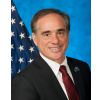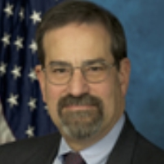The Veterans Health Administration (VHA), located within the Department of Veterans' Affairs (VA), is responsible for providing a wide range of medical services to 5.5 million veterans across the US. Operating one of the largest networks of health care facilities in the nation, VHA has undergone considerable restructuring of its medical delivery system after years of complaints of inadequately treating veterans’ health care concerns. Although the VHA has been credited with significant improvements in helping veterans receive quality care, controversies have continued to occur, including poor treatment leading to deaths.
History of the Department of Veterans Affairs
The Veterans Health Administration, located within the Department of Veterans' Affairs, is responsible for providing a wide range of medical services to 5.5 million veterans across the US. The VHA operates one of the largest networks of health care facilities in the nation that includes 171 medical centers, 340 outpatient clinics, 127 nursing home care units and 196 Vietnam Veterans Outreach Centers. In addition, the VHA helps support veterans' health care in non-VA hospitals and is the country’s largest provider of graduate medical education.
Effect of the Transformation of the Veterans Affairs Health Care System on the Quality of Care (by Ashish K. Jha, Jonathan B. Perlin, Kenneth W. Kizer and R. Adams Dudley, New England Journal of Medicine)
VA straining to treat post-traumatic stress
(by Hal Bernton, Seattle Times)
- Table of Contents
- Overview
- History
- What it Does
- Where Does the Money Go
- Controversies
- Suggested Reforms
- Comments
- Leave a comment


David J. Shulkin was nominated by President Barack Obama on March 18, 2015, to lead the Veterans Health Administration. It would be the first government post for Shulkin, a physician and hospital executive.
Shulkin was born June 22, 1959, and is from Bala Cynwyd, Pennsylvania, a suburb of Philadelphia, where his father Mark was a psychiatrist. David’s sister, Nedra, later became a psychologist.
Shulkin attended Hampshire College, graduating in 1982 with a B.A. in science. He returned to Philadelphia to attend medical school at the Medical College of Pennsylvania, earning his M.D. in 1986. Shulkin did his internship at Yale, and then his residency in internal medicine at the University of Pittsburgh, where his father had also done his residency. While at Pitt, he met the woman who would become his wife, Merle Bari, who was doing her residency in dermatology at the time. When Shulkin finished his residency a year before Bari, he remained at Pitt and studied business administration, which turned out to be excellent training for his career. In 1990-1991 he also was a Robert Wood Johnson Foundation Clinical Scholar at the University of Pennsylvania, studying the increasing cost of health care. He researched why doctors made the decisions they did and tried to use that to improve efficiency and outcomes in large healthcare organizations.
Shulkin remained in Philadelphia, becoming chief medical officer of the University of Pennsylvania Health System in 1990. In 1999, he started an online site, DoctorQuality.com, where patients could check their physicians’ backgrounds for quality and safety.
He returned to healthcare management in 2002 when he was named chief quality officer for the Drexel University College of Medicine and chief medical officer for the Medical College of Pennsylvania. He was also co-founder and president of the nonprofit Patient Safety Officer Society,
In March 2004 Shulkin became chief medical officer of Temple University Hospital and the following year was named president and CEO of Beth Israel Medical Center in New York, posts he held for four years
Shulkin’s work has frequently involved looking at managed and accountable care, in which patients, especially the chronically ill, get the right care at the right time, while avoiding unnecessary duplication of services and preventing medical errors. In 2008, for example, he studied why patients who are admitted at night are more likely to die than patients admitted during the day. Also in 2008 he edited the book Questions Patients Need to Ask: Getting the Best Healthcare.
Since July 2010, Shulkin has been president of the Morristown (N.J.) Medical Center, which is part of Atlantic Health System. One of his innovations there was to champion 24-hour visiting hours for its healing effect on patients.
Shulkin is heavily involved with Atlantic Health System, as he is president not just of Morristown Medical Center, but of Goryeb Children’s Hospital and Atlantic Rehabilitation Institute, as well as Atlantic Health System Accountable Care Organization and Atlantic Health organization Primary Care Partners, and he is principal shareholder in Practice Associates.
Shulkin and Bari have two children, Daniel and Jennifer. Daniel is also involved in health care administration.
-Steve Straehley
To Learn More:
A Story of Three Generations in Health Care (by Daniel B. Shulkin, Mark W. Shulkin and David J. Shulkin, AMA Journal of Ethics)
Like Night and Day — Shedding Light on Off-Hours Care (by David J. Shulkin, New England Journal of Medicine)

A career employee of the Department of Veterans Affairs (VA), Michael Walcoff has served as Acting Under Secretary for Benefits since January 4, 2010, and, according to some VA observers, could become the permanent head of the Veterans Benefits Administration (VBA), a position that has been vacant since February 2008, The last Under Secretary, George W. Bush appointee Daniel Cooper, infuriated many veterans when, at a time that the backlog of disability claims was mushrooming to 400,000, appeared in a religious fundraising video stating that Bible study was “more important than doing the job—the job's going to be there, whether I'm there or not."
- Latest News
- D.C. Public Schools will Teach all Second-Graders to Ride a Bike
- New Rule in Germany Limits Sales of Sex-Themed E-Books to 10pm to 6am
- What Happened to the 6-Year-Old Tibetan Boy the Chinese Government Kidnapped 20 Years Ago?
- U.S. Ambassador to Turkey Photoshops his Hair Color to Mock Turkish Mayor
- Mystery Artist Calls Attention to Unfixed Potholes by Drawing Penises around Them
The Veterans Health Administration (VHA), located within the Department of Veterans' Affairs (VA), is responsible for providing a wide range of medical services to 5.5 million veterans across the US. Operating one of the largest networks of health care facilities in the nation, VHA has undergone considerable restructuring of its medical delivery system after years of complaints of inadequately treating veterans’ health care concerns. Although the VHA has been credited with significant improvements in helping veterans receive quality care, controversies have continued to occur, including poor treatment leading to deaths.
History of the Department of Veterans Affairs
The Veterans Health Administration, located within the Department of Veterans' Affairs, is responsible for providing a wide range of medical services to 5.5 million veterans across the US. The VHA operates one of the largest networks of health care facilities in the nation that includes 171 medical centers, 340 outpatient clinics, 127 nursing home care units and 196 Vietnam Veterans Outreach Centers. In addition, the VHA helps support veterans' health care in non-VA hospitals and is the country’s largest provider of graduate medical education.
Effect of the Transformation of the Veterans Affairs Health Care System on the Quality of Care (by Ashish K. Jha, Jonathan B. Perlin, Kenneth W. Kizer and R. Adams Dudley, New England Journal of Medicine)
VA straining to treat post-traumatic stress
(by Hal Bernton, Seattle Times)
Comments


David J. Shulkin was nominated by President Barack Obama on March 18, 2015, to lead the Veterans Health Administration. It would be the first government post for Shulkin, a physician and hospital executive.
Shulkin was born June 22, 1959, and is from Bala Cynwyd, Pennsylvania, a suburb of Philadelphia, where his father Mark was a psychiatrist. David’s sister, Nedra, later became a psychologist.
Shulkin attended Hampshire College, graduating in 1982 with a B.A. in science. He returned to Philadelphia to attend medical school at the Medical College of Pennsylvania, earning his M.D. in 1986. Shulkin did his internship at Yale, and then his residency in internal medicine at the University of Pittsburgh, where his father had also done his residency. While at Pitt, he met the woman who would become his wife, Merle Bari, who was doing her residency in dermatology at the time. When Shulkin finished his residency a year before Bari, he remained at Pitt and studied business administration, which turned out to be excellent training for his career. In 1990-1991 he also was a Robert Wood Johnson Foundation Clinical Scholar at the University of Pennsylvania, studying the increasing cost of health care. He researched why doctors made the decisions they did and tried to use that to improve efficiency and outcomes in large healthcare organizations.
Shulkin remained in Philadelphia, becoming chief medical officer of the University of Pennsylvania Health System in 1990. In 1999, he started an online site, DoctorQuality.com, where patients could check their physicians’ backgrounds for quality and safety.
He returned to healthcare management in 2002 when he was named chief quality officer for the Drexel University College of Medicine and chief medical officer for the Medical College of Pennsylvania. He was also co-founder and president of the nonprofit Patient Safety Officer Society,
In March 2004 Shulkin became chief medical officer of Temple University Hospital and the following year was named president and CEO of Beth Israel Medical Center in New York, posts he held for four years
Shulkin’s work has frequently involved looking at managed and accountable care, in which patients, especially the chronically ill, get the right care at the right time, while avoiding unnecessary duplication of services and preventing medical errors. In 2008, for example, he studied why patients who are admitted at night are more likely to die than patients admitted during the day. Also in 2008 he edited the book Questions Patients Need to Ask: Getting the Best Healthcare.
Since July 2010, Shulkin has been president of the Morristown (N.J.) Medical Center, which is part of Atlantic Health System. One of his innovations there was to champion 24-hour visiting hours for its healing effect on patients.
Shulkin is heavily involved with Atlantic Health System, as he is president not just of Morristown Medical Center, but of Goryeb Children’s Hospital and Atlantic Rehabilitation Institute, as well as Atlantic Health System Accountable Care Organization and Atlantic Health organization Primary Care Partners, and he is principal shareholder in Practice Associates.
Shulkin and Bari have two children, Daniel and Jennifer. Daniel is also involved in health care administration.
-Steve Straehley
To Learn More:
A Story of Three Generations in Health Care (by Daniel B. Shulkin, Mark W. Shulkin and David J. Shulkin, AMA Journal of Ethics)
Like Night and Day — Shedding Light on Off-Hours Care (by David J. Shulkin, New England Journal of Medicine)

A career employee of the Department of Veterans Affairs (VA), Michael Walcoff has served as Acting Under Secretary for Benefits since January 4, 2010, and, according to some VA observers, could become the permanent head of the Veterans Benefits Administration (VBA), a position that has been vacant since February 2008, The last Under Secretary, George W. Bush appointee Daniel Cooper, infuriated many veterans when, at a time that the backlog of disability claims was mushrooming to 400,000, appeared in a religious fundraising video stating that Bible study was “more important than doing the job—the job's going to be there, whether I'm there or not."
- Latest News
- D.C. Public Schools will Teach all Second-Graders to Ride a Bike
- New Rule in Germany Limits Sales of Sex-Themed E-Books to 10pm to 6am
- What Happened to the 6-Year-Old Tibetan Boy the Chinese Government Kidnapped 20 Years Ago?
- U.S. Ambassador to Turkey Photoshops his Hair Color to Mock Turkish Mayor
- Mystery Artist Calls Attention to Unfixed Potholes by Drawing Penises around Them





Comments